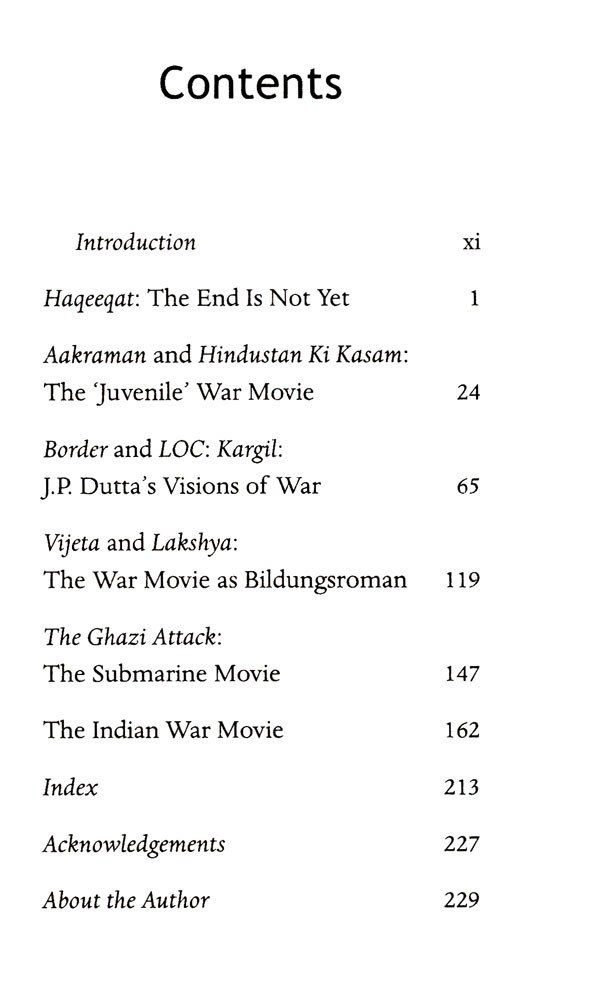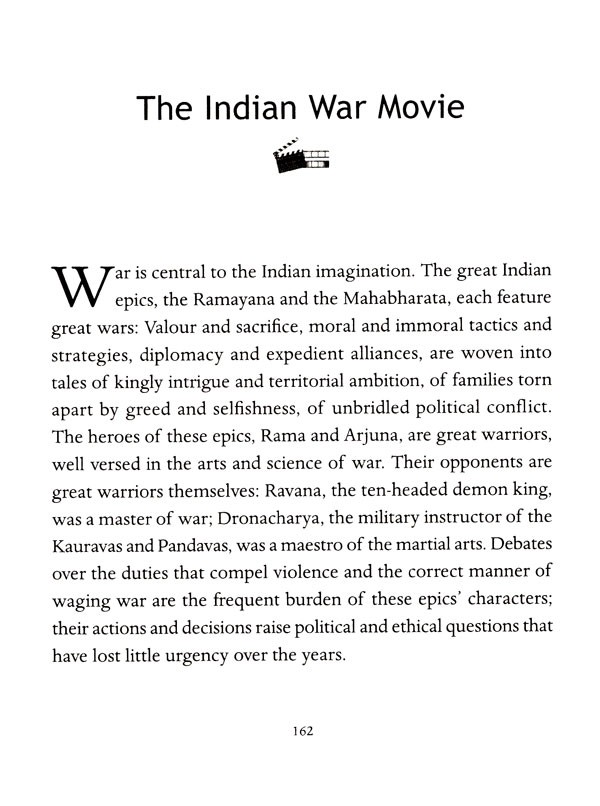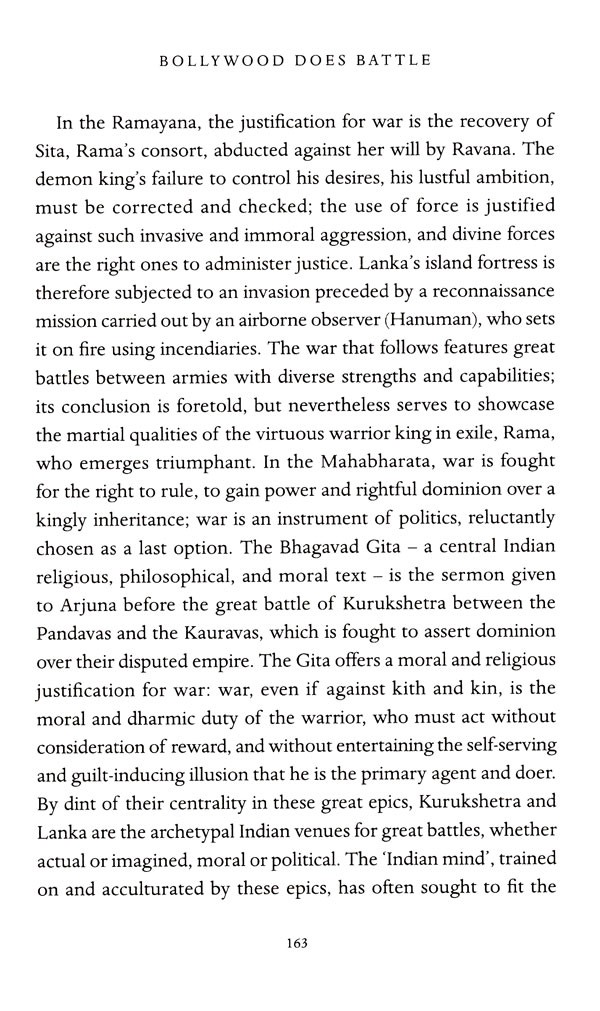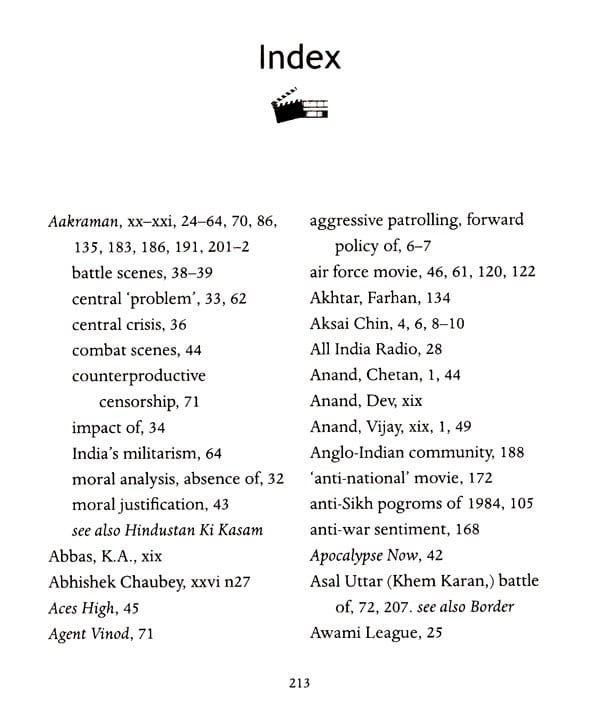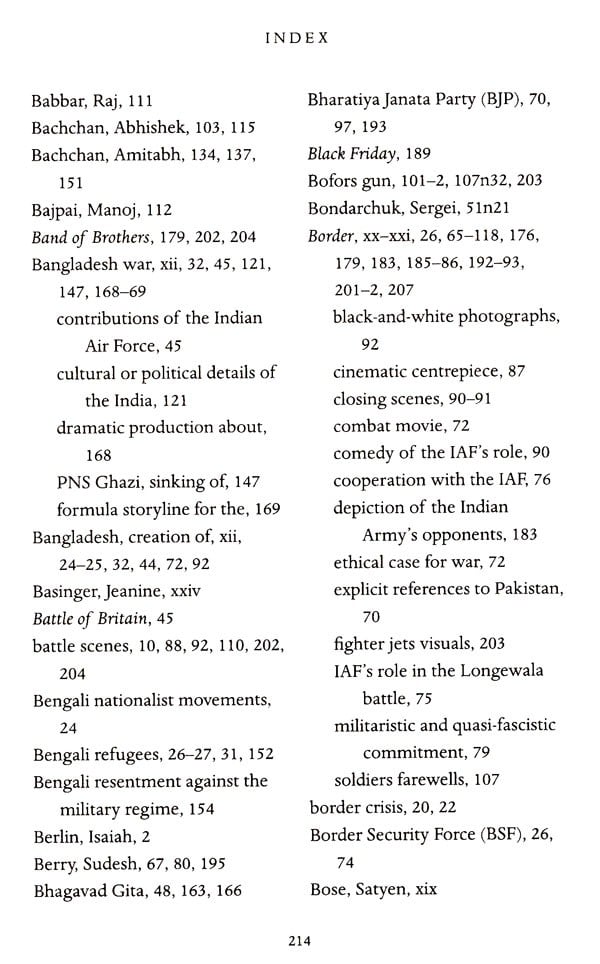
Bollywood Does Battle (The War Movie and The Indian Popular Imagination)
Book Specification
| Item Code: | AZA162 |
| Author: | Samir Chopra |
| Publisher: | Harper Collins Publishers |
| Language: | English |
| Edition: | 2020 |
| ISBN: | 9789353578312 |
| Pages: | 260 |
| Cover: | PAPERBACK |
| Other Details | 8.5 x 5.5 inches |
| Weight | 230 gm |
Book Description
How do Indians understand themselves and their nation through its film industry's cinematic representations of war?
War is part of the story of the Indian nation; its presence in India's past continues to shape the Indian present and future. The 1962 China war, the 1971 Bangladesh war and the 1999 Kargil conflict, all play outsized roles in the Indian popular imagination: The Indian film industry's war movies play a vital role in representing this aspect of Indian history. Samir Chopra's fascinating book takes a closer look at these movies' emotionally charged depictions of Indian military history. It examines classics of the war movie genre - from Haqeeqat, Border and Hindustan Ki Kasam to Vijeta, LOCAL Kargil, Lakshya and The Ghazi Attack - to see what they reveal and illuminate about the relationship of the Indian nation with war. Chopra thus enquires into how: these movies establish popular Indian understandings of patriotism, militarism and nationalism, and reinforce supposed 'Indian' values through their cinematic representations of war.
This is a must-read for anyone interested in the relationship of Bollywood films to ndian culture and history.
Samir Chopra is a professor of philosophy at Brooklyn College of the City University of New York. He has written on the politics of technology, the legal theory of artificial intelligence, military aviation history, and cricket. He writes online at samirchopra.com
On 15 August 1947, India attained independence from Great Britain's colonial subjugation via a protracted struggle that included both revolutionary violence and non-violent protest. A few weeks later, it went to war with Pakistan, which, newly carved out from Britain's Indian empire, had sent armed guerrillas into the Himalayan kingdom of Kashmir, seeking to settle by force the question of which of the two nascent postcolonial nations the former imperial possession owed allegiance to.That war ended in a stalemate – one that persists to this day – after a ceasefire brokered by the United Nations. Since then, the fledgling nation of India has gone to war four more times. In 1962, against China - a war that ended in a humiliating loss of national territory and self-esteem, and which ended the then Indian Prime Minister Jawaharlal Nehru's political career; in 1965, against Pakistan - in response to the provocations its neighbour had sponsored in the Rann of Kutch and Kashmir, en route to another ceasefire mandated by the UN; in 1971, against Pakistan again – halting a genocide conducted by the West Pakistan Army in the erstwhile East Pakistan and creating the nation of Bangladesh in the process; finally, in 1999, after a brief but intense border conflict, India evicted intruding Pakistani troops from the occupied heights of Kargil in Kashmir.
**Contents and Sample Pages**
